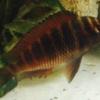
Labidochromis Chisumulae Vs. Nkali
#1

Posted 10 January 2012 - 11:50 PM
I'm keen to see what's in Oz (not random google pics).
Daz
#2

Posted 11 January 2012 - 11:15 AM

Sorry bout the blur bro...
#3

Posted 11 January 2012 - 10:06 PM
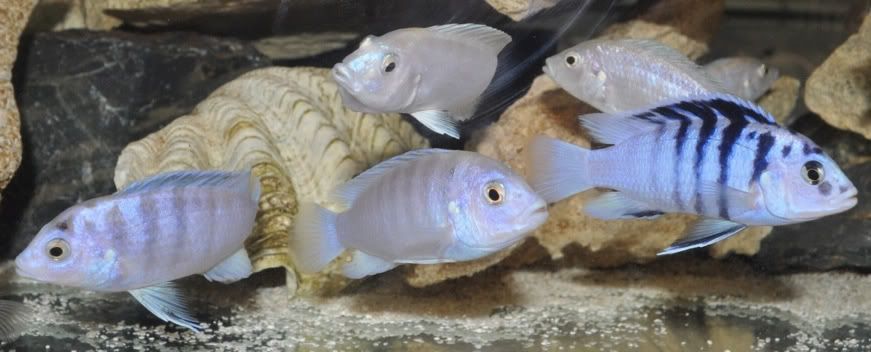
Is anyone keeping both and can clearly ID the difference between them?
My first impression was the nkali had finer barring and more of them but I'm not 100% if this is reliable. Nkali have blacker dorsals?
#4

Posted 12 January 2012 - 08:19 PM
#5

Posted 12 January 2012 - 09:40 PM
And nkali seem to have more shades of black scales with darker barring. HTH
Phil
#6

Posted 12 January 2012 - 10:24 PM
Labidochromis chisumulae
Scientific Name: Labidochromis chisumulae
Pronunciation: Lab-id-e-o-cro-mis chiz-sum-u-lay
Trade Name(s): Chisumulae
Distribution: Chizumulu Island
Habitat: Rocky reefs.
Diet: Aufwuchs, invertebrates & insects.
Sexing: Male's are light blue/white with blue/black barring with blue/black dorsal.
Females are white with faint barring.
Maximum Size: 11cm
Temperature: 24 to 26c
pH: 7.5 to 9.0
Water Hardness: 300-400ppm
Availability: Becoming Available in Oz.
Comments: A very pretty species and somewhat peaceful like Labidiochromis caeruleus, thought to be a part of the Labidiochromis caeruleus group.
Males in breeding dress are a beautiful sight. They are becoming more popular in Australia and therefore becoming easier to obtain as people start breeding them.
Page # Malawi Cichlids In Their Natural Habitat Vol 4: 142
Retail Value: $20 - $35 @ 4-5cm
--------------------------------------------------------------------------------------------------------------
Labidochromis caeruleus Lundo Island 'nakali'
Scientific Name: Labidochromis caeruleus Lundo Island 'nakali'
Pronunciation: Lab-id-e-o-cro-mis sa-rule-e-us Nah-car-lee
Trade Name(s): Nakali
Distribution: Lundo Island
Habitat: Rocky areas.
Diet: Aufwuchs, Algae, Insects & Snails.
Sexing: Male's are a whitish color with dark blue/black barring through to the dorsal.
Females are white with faint barring.
Maximum Size: 11cm
Temperature: 24 to 26c
pH: 7.5 to 9.0
Water Hardness: 300-400ppm
Availability: Rarely Available in Oz.
Comments: One of the location variants of Labidochromis caeruleus, the Nakali is a stunning little Mbuna with plenty of color.
They a very similar to Labidochromis chisumulae in color and positive ID is only 100% with the 2 species side by side. Nakali are more white than Labidochromis chisumulae.
Page # Malawi Cichlids In Their Natural Habitat Vol 4: 139 as Lundo Island (7)
Retail Value: $40 - $50 @ 4-5cm
#7

Posted 12 January 2012 - 10:45 PM
Did you come to the conclusion of any other identifiers seperating the 2 other than colour?
I noticed in the last vid your nkali does show a bit of blue depending on the angle whereas the chisumulae seems to appear blue at any angle.
Daz
#8

Posted 13 January 2012 - 12:08 AM
#9

Posted 13 January 2012 - 12:12 AM
Does it showing the nkali with or without the black banding? I believe there's yet another variant that is pure white (no banding) but the nkali name has been messed up within the trade somewhere. Nkhata Bay rings a bell...
#10

Posted 13 January 2012 - 12:49 AM
#11

Posted 02 February 2012 - 07:43 AM
Chisumulae
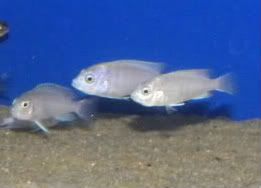
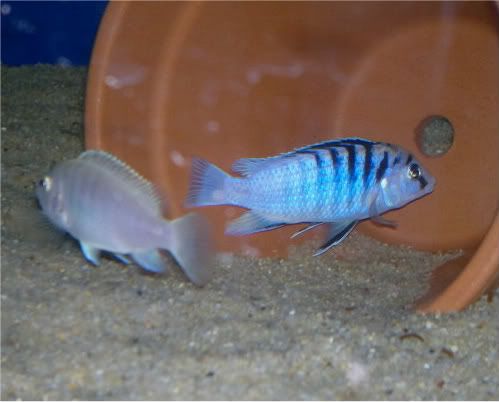
Nkhali

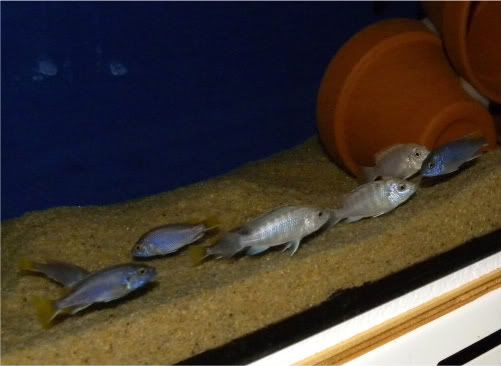 Notice the grey but distinct band on these females, the picture isn't the best, but these are 3 females and the band is noticable in the 2 fish in the foreground.
Notice the grey but distinct band on these females, the picture isn't the best, but these are 3 females and the band is noticable in the 2 fish in the foreground.
#12

Posted 02 February 2012 - 08:11 PM
Looking at the last vid Az provided can you make out the grey in the girls?
#13

Posted 03 February 2012 - 06:13 AM
Of course there is individual difference in fish and all fish are not alike, but when looking at a colony this has been something I find reasonably consistent.
0 user(s) are reading this topic
0 members, 0 guests, 0 anonymous users




